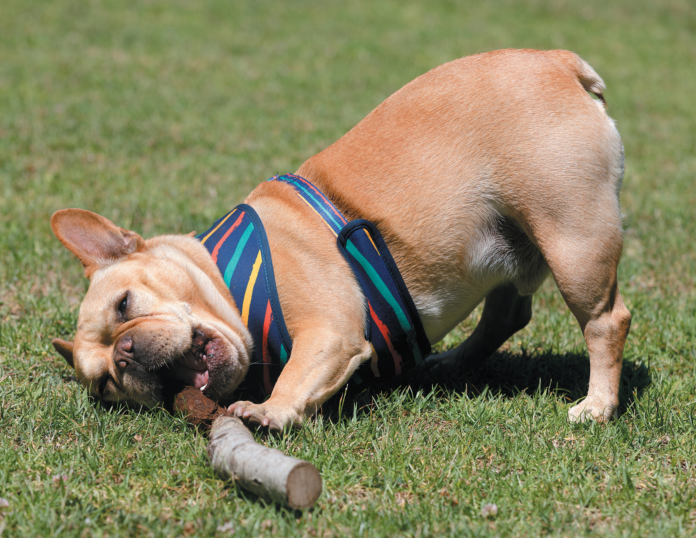We’ve all seen dogs who are perennial stick chewers. No sooner do they get outside than they pick up a stick and start chomping on it. It may seem harmless, but it’s not. If your dog is a regular stick chewer, you should teach him to “leave it” or “drop it” on cue or, if that doesn’t work, consider fitting him with a comfortable, breathable muzzle when you are out for walks. This becomes especially important if he walks off leash and you can’t control his behavior as easily.
The problem is not little bits of a stick ending up in the gastrointestinal tract. That would be taken care of by the acidic juices of the stomach. It’s that a splintered-off piece of the wood could make its way to the lining of a dog’s mouth —the oral mucosa. From there, instead of traveling through the bloodstream, the sliver could migrate directly through tissue to somewhere in the head, or, more commonly, the neck.
Splinter stuck in the neck
When a splinter from a chewed stick makes its way from the mouth to the neck and lodges there, the dog may end up with a cervical abscess. “Cervical” refers to anything having to do with the neck, and an abscess is a deep infection.
The abscess comes from bacteria on the dirty stick as well as bacteria in the dog’s mouth that never should have made their way to the neck. The deep pool of infection — typically on the underside of the neck, right in the middle — often causes a fever and a decreased willingness to eat, in addition to overall lethargy. There’s also usually firm, severe swelling in the area from all the fluid and pus the infection generates.
Diagnosis. “The best tool for diagnosis is an ultrasound,” says Your Dog editor-in-chief John Berg, DVM. “It will reveal a pocket of fluid in the swollen area, and then we can pass a needle into the pocket to retrieve some of the pus and confirm that the swelling is the result of an infection rather than a tumor.”
Treatment. The splinter does not have to be removed. It dissolves. But a surgical incision is still necessary to drain the pus and allow the doctor to flush the area and clean it with a sterile fluid. A suction drain draws away any residual fluid and is left in place for a couple of days attached to a little bag to catch any fluid that might still form.
The doctor will also take a culture of the pus to identify the offending bacteria and make sure the right antibiotic is prescribed. Most dogs do quite well after their abscess is drained, although occasionally a second surgery is required to fully remove the infection.
Splinter behind the eye
When a splinter migrates from the mouth to behind the eye, a retrobulbar abscess can form. (“Retro” means “behind,” while “bulbar” means globe, as the eye is a globe.) The dog’s eye may protrude, and it may look red or otherwise irritated. Again, the animal may feel sick, have a fever, and not want to eat. He might be in a lot of pain around the eyeball as well.
Diagnosis. In some cases, a CT scan is ordered. But if the dog is a known stick chewer and is not old (and therefore less apt to be suffering from a tumor in the area), the vet may pass on the scan, Dr. Berg says.
Treatment. Sometimes treatment is as simple as a round of antibiotics. But if they don’t work, an incision is made to allow for pus drainage, just like in the neck. The incision is usually inside the mouth, right behind the last upper molar, which is immediately below the eye. The pus drains into the mouth, which sounds gross, but it’s much better than making an incision near the eye.
Sometimes a chunk of stick as long as an inch can become stuck. It migrates from the mouth to somewhere between the cheekbone and the jaw bone. “That can cause extreme pain when the dog opens his mouth,” Dr. Berg says.
Diagnosis is generally confirmed with ultrasound as the radiolucency of the stick makes it difficult to see on a CT scan or x-ray. Once its location is pinpointed, it is removed surgically.
This is relatively rare, Dr. Berg says. Splinters in the neck and behind the eye are significantly more common.




